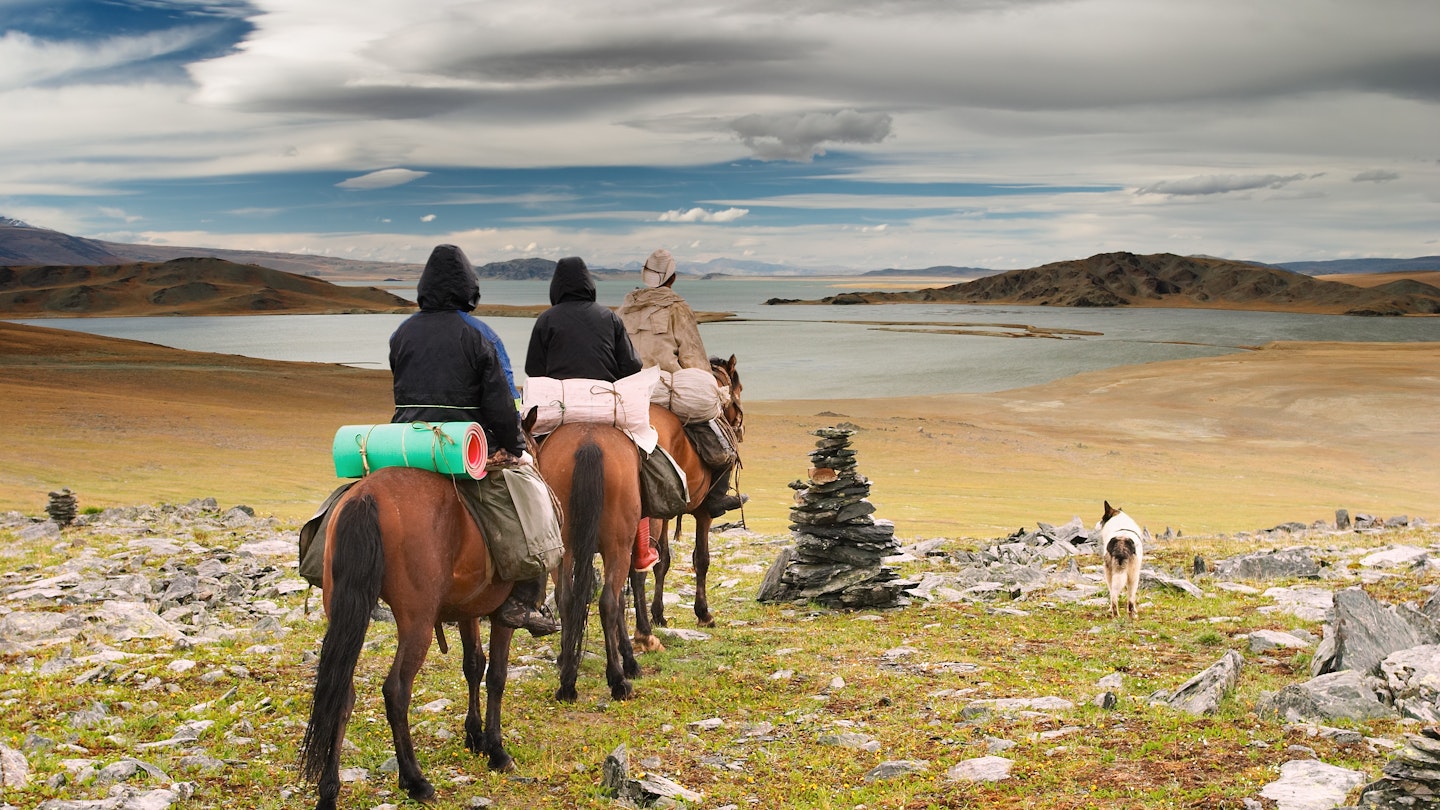Journeying through Mongolia’s epic landscapes is a mesmerizing adventure. The sheer scale and emptiness of the steppe has a hypnotic lure that stays with you long after returning to civilization. However, travel can be complex—in a country three times the size of France, where most roads are grassy tracks, it takes time to get anywhere. But that’s all part of the experience in one of the world’s last remaining nomadic societies.
Here’s our guide to getting around this remote and rugged destination.
Renting a 4WD: The Best Way to Explore Cross-Country
Once you escape the orbit of Ulaanbaatar, Mongolia’s gateway city, you’ll need a vehicle to properly explore the great outdoors. A 4WD is essential unless you only plan to travel to sights connected to the capital by paved roads, such as Khövsgöl Nuur National Park.
To navigate the rugged grasslands, consider a Toyota Landcruiser for comfort, or the retro-cool Russian-made UAZ-452, known for its reliability in rough terrain, though it can be prone to breakdowns. Most tours, whether budget or high-end, will include a vehicle, driver, and guide, as drivers typically do not speak English. Group tours often employ 4WD vans, while private tours for individuals, couples, and families tend to use more comfortable 4WD “jeeps.” It’s vital to plan well in advance to secure a vehicle, as Mongolia’s travel season is brief—snow often hits Ulaanbaatar by September and rarely thaws before April.
Self-Drive: An Option for Experienced Adventurers
If you’re feeling adventurous, self-driving is possible by renting a vehicle. Make sure you have your home driving license (valid for at least one year) and an international driving permit. Most self-drivers stick to the expanding paved road network radiating from Ulaanbaatar. However, if you plan to venture further or go off-road, be prepared for challenges like water crossings and navigating remote areas.
Cellular coverage can be spotty in rural regions, so bring a compass and a physical map as a backup. Hiring a guide can also prove beneficial, as they can help avoid routes that are prone to mud, swollen rivers, or deep sand. Ensure you carry extra fuel in jerry cans and at least two spare tires. For trips to ultra-remote areas, consider using two vehicles for safety.
When planning your journey, don’t be overly ambitious—Mongolia is vast, and your top speed on the grasslands rarely exceeds 40–50 km/h (25–31 mph). Focus on one region at a time and plan to spend a minimum of two nights at each stop to enjoy the serenity of the landscape.
Exploring on Horseback, Camel, or Yak
The Mongol empire thrived on the backs of its strong horses, and the love for riding remains a cherished tradition. Many tour operators offer multi-day guided horse treks in regions like Arkhangai and Khentii. Notably, Khövsgöl Nuur has a solid network of guides and horses available for hire.
For the truly adventurous, consider organizing your own expeditions, such as the popular route from Terkhiin Tsagaan Nuur to Khövsgöl Nuur. This journey takes about two weeks, following picturesque river valleys for nearly 300km (180 miles).
Additionally, you can trek by camel across the sand dunes of the Gobi Desert, particularly in locations like Khongoryn Els. Both camels and yaks continue to assist pastoral nomads in transporting yurts across the steppes. Several operators provide opportunities for unique slow travel experiences, utilizing pack-camel caravans or traditional yak and camel carts.
Buses: A Unique Slow Travel Experience
Mongolia’s provincial capitals are connected to Ulaanbaatar by large buses, each accommodating 40 or more passengers. Daily services run between major hubs, while smaller minivans operate in more remote locations. Even with bus travel, keep in mind that you’ll still need a vehicle and driver to access the deeper wilderness and its sights.
In local markets, private minivans wait to fill up, providing a memorable travel experience that’s not always comfortable—expect to be packed in with other passengers and cargo.
Flying West: The Best Option for Remote Destinations
Famed for its Kazakh eagle hunters and breathtaking peaks, Western Mongolia is a premier destination in Central Asia. However, it is also a solid 36-hour drive from Ulaanbaatar; consequently, most travelers opt for flights. Two airlines operate domestically: Aero Mongolia and Hunnu Air, offering connections to major areas out west. Note that flights fill up quickly during peak seasons, and it is advisable to plan ahead.
Mongolia’s Train Network: Limited for Travelers
Mongolia’s rail system is sparse and primarily follows the Trans-Mongolian route between Moscow and Beijing. Domestic trains operate on this route but are not particularly practical for tourists. You can reach some parts of the Gobi via train from Ulaanbaatar to Sainshand for visits to Ikh Nart Nature Reserve.
Accessible Travel Options in Mongolia
For travelers using wheelchairs or having sensory challenges, it is crucial to communicate your needs to travel companies ahead of time. Opt for a company that shows genuine willingness to accommodate your specific circumstances for a more enjoyable experience.





